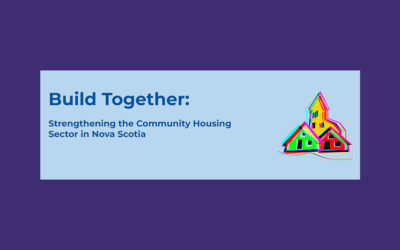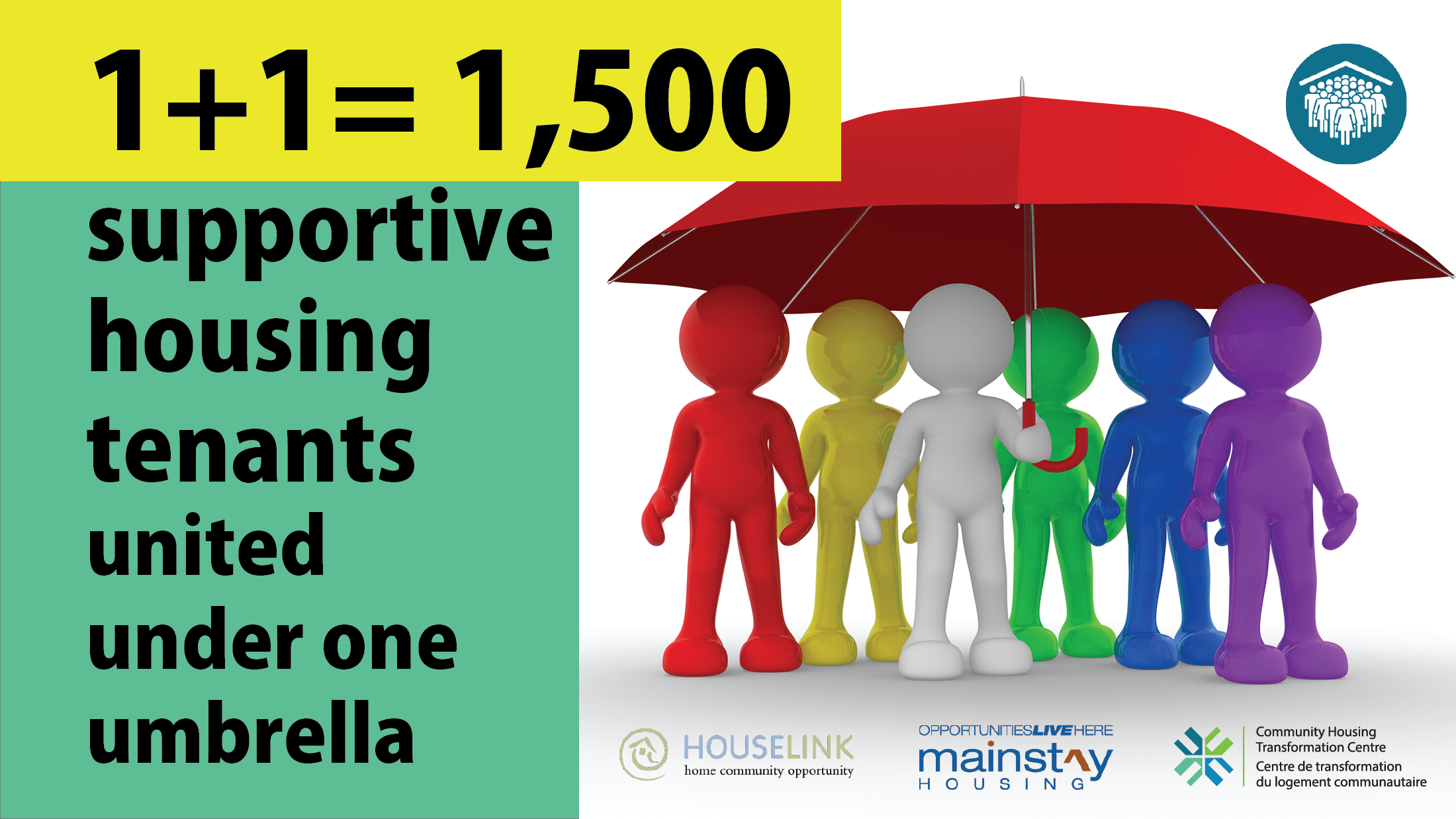
Emerging from the Sidelines!
Community Housing Growth, A Key Component to Provide a Roof for All
On average, over the past ten years, we have built 201,070 new homes per year across the country. During the same ten years, the number of households increased by an average of 150,293 per year. Similar figures have been repeated for half a century now. As supply has been growing faster than demand for so long, house prices should be at their lowest, but we all know very well that is not the case.
In fact, census data indicates that 322,600 affordable housing units have disappeared between 2011 and 2016. Even more concerning, all the indicators we have had access to since 2016 lead us to believe that the 2021 data will show that the loss will amount to at least 500,000 affordable homes.
In terms of community housing, the total net number unit has remained at 600,000 for the past 25 years. Even the federal government’s recent and lauded National Housing Strategy limits its ambitions to 50,000 new community housing units (out of a total of 100,000 new affordable homes) by 2028.
The 1.7 million Canadian households who bleed each month to pay their rent better have a substantial supply of hemoglobin because help does not seem to be on its way!
The causes behind the inability of the housing market to meet the needs and means of large facets of the population are numerous and complex. But foremost, we think of the speculation generated by the financialization and commodification of residential real estate.
For the Centre, the only way to achieve the right to housing for all is to protect a significant part of the residential stock from these phenomena. As such, community housing (NPOs, Cooperatives, Land Trusts) is a choice mechanism with demonstrated usefulness and effectiveness.
Therefore, it is essential to reverse the process of marginalization that began 25 years ago and aggressively relaunch the development of community housing stock.
While the past two decades have not been positive in this regard overall, this should not prevent us from appreciating the will, efforts, and successes of the community housing sector in recent years to combat this trend. These successes, while modest, should be seen as a source of inspiration, demonstrating the sector’s ability to help turn things around in the housing market.
The Centre believes that the community housing sector has three main tools to influence the future of housing, and our role is to turn the dial on all three of them.
First, we can and we must make our voices heard. The 600,000 households that live in our homes, the tens of thousands of volunteers and employees who contribute to it, the millions of poorly housed people across the country, and the many organizations concerned with social justice, intergenerational equity and respect for the environment must unite to obtain budgetary, regulatory, and political measures that support the revival of rapid development of community housing.
Second, we can leverage our assets. The community housing movement has resources (land, buildings, financial reserves), which, if well-coordinated, can act in a meaningful way. Currently, in general, these assets are managed passively. Without participating in the speculation process, we can increase the value of what we already have in hand. Thousands of sites could be densified, and with thousands of our buildings now being mortgage-free (or close to that), they could be used as collateral to obtain financing to acquire or build homes.
Third, we can be creative and innovative. In addition to material resources, we bring together a large number of people (our tenants, our volunteers, the poorly housed) and social resources (our organizations, the scientific community, allies in the social and cooperative economy). Management and the level of mobilization can be improved. Whether by pooling some systems (management, IT, maintenance, etc.), by enhancing the training and skills of our employees and directors, or by exploring new financial models (patient capital, co-ownership, cross-investments, etc.), we can do better with what we have in hand. Several initiatives emerged in recent years; we must study, learn, and be inspired by them so we can generalize the successful ones while continuing to explore new avenues.
Upon these assertions and ambitions, the Centre commits to:
- Promote and leverage existing funding models for growth.
- Support the exploration of new growth models (acquisition, land trust, other).
- Increase access to tools and resources to promote community housing as a solution.
- Identify sector gaps (emerging issues and opportunities) and fill them (e.g. impacts of boom and bust economic cycles).
Learn about News and Awarded Projects that relate to
Sector Growth
Sector activities in April: The Centre to promote forward-looking solutions
The Centre in Edmonton The Centre will be attending the Alberta Seniors & Community Housing Association (ASCHA) conference at the Edmonton Convention Centre, April 3–5. Come visit our booth and don’t miss the sessions we will be presenting: ...
According to CMHC’s rental market report, the crisis is still growing. What role can the community housing sector play?
Last month, the Canada Mortgage and Housing Corporation (CMHC) released its annual rental market report. The conclusions are not surprising: the crisis is getting worse, as we have been observing for several years now. We suggest a summary of the main conclusions of...
(BC) A promising and replicable model to stop the leak in affordable housing
“Anyone else feel like they’re drowning here?” reads an anonymous post from a user on the Vancouver subreddit, an online community with over 452 thousand members. “[I have] a minimum wage job, getting renovicted AGAIN, [it’s my] 5th time having to move since 2016 and...
The Multigenerational Home Renovation Federal Tax Credit: What effects will it have on the housing crisis?
As part of its plan to make housing more affordable, the federal government implemented a new refundable tax credit for multigenerational home renovations on January 1, 2023. This contribution to finding a solution to the housing crisis, in particular to the housing...
An additional investment to fund the growth of community housing in Nova Scotia
The Centre salutes the decision of the government of Nova Scotia to invest an additional $2.5 million in the Community Housing Growth Fund (CHGF), doubling its initial investment. The fund, administered by the Centre, has had a significant success since it was...
Responding to the housing crisis with an innovative collaboration
Competition divides, while collaboration multiplies. This is the principle put into action by the founding members of the Alliance des corporations d’habitations abordables du territoire du Grand Montréal (ACHAT). In Montreal, 36% of households spend more than a third...
Centre staff at events across the country
It’s been a busy fall for Centre staff! From coast to coast, we’ve been attending events and meeting with people from across Canada’s community housing sector. Here are some of the events we’ve taken part in: ONPHA, November 3-5, Toronto, ON We were happy to have a...
Nova Scotia’s community housing sector consolidates by forming a non-profit housing association
On October 27, 2022, leading representatives of Nova Scotia's non-profit housing sector have committed to forming the Nova Scotia Non-Profit Housing Association (NSNPHA). The two years of work leading up to this historic decision began with extensive...
Watch: Community Housing Growth Fund launches in Nova Scotia
There’s a new tool to help Nova Scotia’s non-profit and co-operative housing sector to grow larger and stronger. The Community Housing Growth Fund (CHGF), funded by the Government of Nova Scotia and administered by the Centre, launched on November 4,...

Sectoral Impact Projects
Develop new services, models or tools to help the sector build and manage affordable housing.

Local Projects
Sector Transformation Fund
Enhance the capacity of your local organization to provide affordable housing in a better way.

Community-Based Tenant Initiative
Develop projects that aim to engage tenants/co-op members in housing decisions that affect them.


















